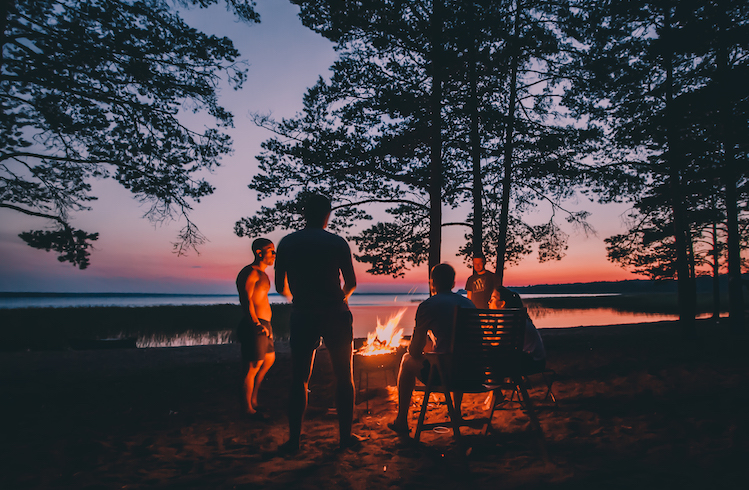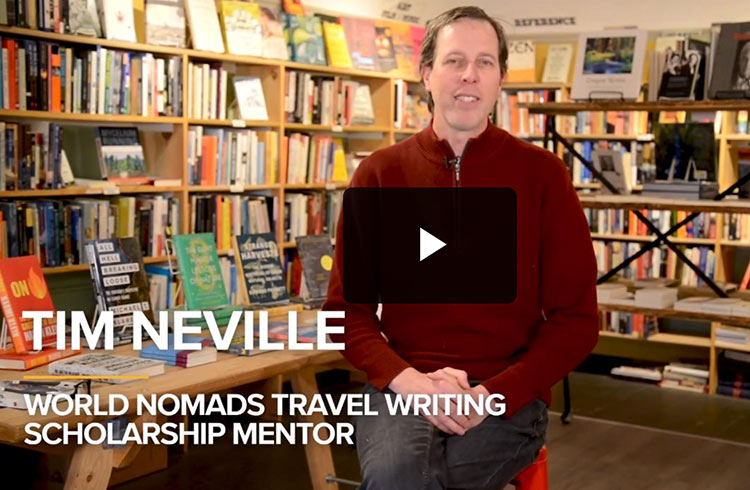How to Keep an Audience When you Tell a Great Campfire Story
Keeping everyone's attention while you spin a great travel yarn isn't as easy as it sounds. Tim Neville asks storytelling experts how to keep your audience interested until the end.
 Photo © Getty Images/ Анна Андреева
Photo © Getty Images/ Анна Андреева
For as long as we’ve had campfires, there have been people around them willing to spin a tale. But not all stories are equal, of course. While the flames can set the mood and attract a captive audience, a campfire offers no license to blather.
“No one likes a blowhard,” shrugs Gary McMahan, a celebrated cowboy poet who’s spun countless tales around campfires in the American West. “That's what you want to avoid.”
So, what separates a great tale from a vomitus one? The tricks are like those used to write a great story but with a few key differences. Here, McMahan and Kymberlee Weil, a professional storytelling coach and founder of the Storytelling School, offer up some tips on how to turn your own stories into campfire masterpieces.
The set up
The fire’s crackling. The dishes are done, and the conversation has found a natural lull. Here’s your shot, buckaroo. Time to tell a story.
McMahan says you should introduce your story in a way that gets people’s attention right away. That helps shift the focus. “Your introduction should be brief and to the point,” he says, and it doesn’t necessarily even have to be your story you’re setting up. In fact, teasing a tale in a somewhat ambiguous manner can really perk up the ears.
“Here’s a true story for you,” he says, offering an example of how he sets up one of his most popular tales. “Now, I didn't see this, but I heard about it for years, and I know the guy that did it, and I know his relatives who saw it.”
A set-up like that creates some natural tension and within seconds he has primed your imagination before the story even starts.
The inciting incident
You have about five minutes to tell your story before your audience starts to get annoyed. If they like what they hear, they’ll give you five more, and then maybe five more still, but you must earn each segment, McMahan says.
Weil agrees. “We don't want to hear that huge, long story that your uncle might tell,” says Weil, who coaches TED Talk speakers, entrepreneurs looking for funding, and other leaders in need of “high-stakes” storytelling help. Instead, she says, start with a specific moment in time, the one that storytellers call the “inciting incident.”
“If you think about any movie that you've seen, you are instantly taken into a world and pretty soon, something happens,” she says. A tornado whisks Dorothy to Oz. Army spies tell Indiana Jones the Nazis are close to finding the Ark of the Covenant. If you want to tell a story about the time you forgot your passport on an Indian train, don’t start with what you had for breakfast.
“Start with what happened just before, and build out what happened from there,” Weil says. You panic, you gather your wits, and your quest to get yourself out of a pickle begins. Get to the good stuff fast, then slow down and explain what's at stake and how you feel about that. You want the audience to care about you.
Keeping it moving
Conflict sits at the heart of all good storytelling as our innate thirst for closure pulls most stories along. One thing must lead to the next and the next, so skip the side stories
The best tales often pile on multiple conflicts, a technique that Weil calls “double dipping.” If the embassy sets you up with a new passport quickly, that’s great but a mediocre story. But if the guard mistakes you for an outlaw and throws you in jail, the plot has really thickened.
Not everything has to be super dramatic to make for a good yarn, though. McMahan turns simple events into captivating tales by triple or even quadruple dipping.
That true story he said he didn’t see himself but had heard about it for years? It involved a cowboy who found a lost cat that curled up on the saddle with him for the ride back home. Then a dog wanted to chase the cat off that saddle. The cowboy threw his hat at the dog, but that exposed the cowboy’s bald head, which gave the cat a place to climb on to get away from the dog. That hurt, but the cowboy couldn’t do anything about it because the commotion spooked the horse that then threatened to buck him off.
Remember your details
As with any story, you can keep your audience’s imaginations firing with strong details and verbs. McMahan didn’t just say “cat” but “tabby cat” and the dog didn’t “bark” but “snarled and snapped.”
Weil says this is key. If you’re nervous, don’t simply say that. Instead, mention your sweaty hands and racing heart.
“Your words need to elicit a feeling of wonder, of curiosity, of fear, of hope of, you know, anything,” she says. This is where pacing can help, too. If there’s a tense moment right before the embassy guard handcuffs you, use short sentences. He looks at me. I look at him. He makes a call. Three more guards show up.
And use the present tense. “That makes your audience a character in the story with you,” she says.
A good conclusion
“Coaches will tell athletes before a big game ‘We start strong; we finish strong,’” Weil says. “A strong ending is everything.”
The classic storytelling formula says endings must resolve the conflicts and show the main character transformed by the journey. Campfire stories don’t need to be so mythical, but a little reflecting can go a long way. Try circling back to your hook or something memorable that happened and play with it.
To conclude the cowboy-cat story, McMahan wraps the tension up quickly and playfully. The horse bucks the cowboy with the cat on his head from the saddle, but then everything stops. The cat’s fine. The dog’s fine. The horse’s fine. Only the cowboy is bruised and bloody.
The reflecting comes very subtly right before the end: The cowboy’s convinced the animals conspired against him “but the truth is he just got in nature’s way,” McMahan says. His last line uses a pun like a punchline to gracefully shut the door on the story: “Like I said, there are memories you never leave behind, like when that cowboy came up the road with a cat on his mind.”
And remember, a good story told well can really tighten up your group. “We as humans think in story, we absorb story, and so we can use that power to connect to each other,” Weil says. “Storytelling is the fastest way to build trust, period.”


No Comments